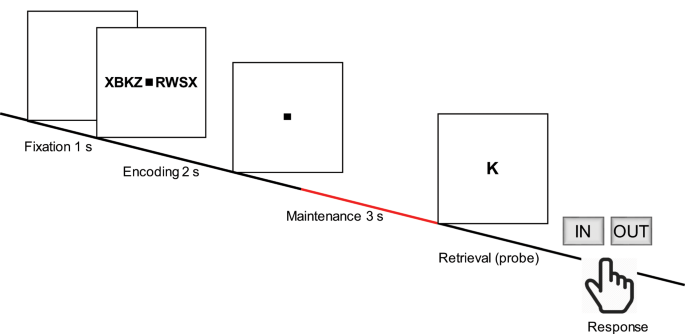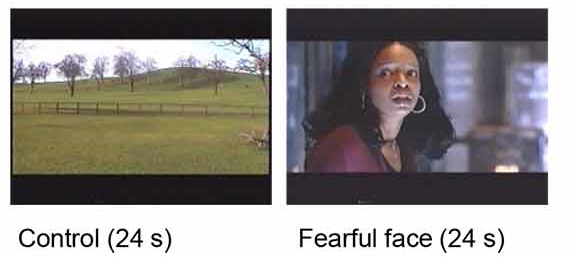Costa F, Krayenbühl N, Ramantani G, Boran E, König K, Sarnthein J
Dataset of BCI2000-compatible intraoperative ECoG with neuromorphic encoding Online
2024.
@online{nokey,
title = {Dataset of BCI2000-compatible intraoperative ECoG with neuromorphic encoding},
author = {Costa F, Krayenbühl N, Ramantani G, Boran E, König K, Sarnthein J},
url = {https://openneuro.org/datasets/ds004944/versions/1.0.1, Data on OpenNeuro},
doi = {10.18112/openneuro.ds004944.v1.0.1},
year = {2024},
date = {2024-01-30},
keywords = {},
pubstate = {published},
tppubtype = {online}
}
Dimakopoulos V, Mégevand P, Stieglitz L, Imbach L, Sarnthein J
2023.
@online{ds004752:1.0.0,
title = {Dataset of intracranial EEG, scalp EEG and beamforming sources from human epilepsy patients performing a verbal working memory task},
author = {Dimakopoulos V and Mégevand P and Stieglitz L and Imbach L and Sarnthein J},
url = { https://openneuro.org/datasets/ds004752, Data on OpenNeuro },
doi = {/10.18112/openneuro.ds004752.v1.0.1},
year = {2023},
date = {2023-09-13},
publisher = {OpenNeuro},
keywords = {},
pubstate = {published},
tppubtype = {online}
}
Dimakopoulos V, Neidert MC, Sarnthein J
Intraoperative recordings of medianus stimulation with low and high impedance ECoG Online
2023.
@online{nokey,
title = {Intraoperative recordings of medianus stimulation with low and high impedance ECoG},
author = {Dimakopoulos V and Neidert MC and Sarnthein J},
url = {https://openneuro.org/datasets/ds004642/versions/1.0.1, Data on OpenNeuro},
doi = {10.18112/openneuro.ds004642.v1.0.1},
year = {2023},
date = {2023-07-31},
keywords = {},
pubstate = {published},
tppubtype = {online}
}
Dimakopoulos V, Selmin G, Regli L, Sarnthein J
Intraoperative SEP with stimulation rates 2.7-28.7 Hz Online
2023.
@online{nokey,
title = {Intraoperative SEP with stimulation rates 2.7-28.7 Hz},
author = {Dimakopoulos V and Selmin G and Regli L and Sarnthein J
},
url = {https://openneuro.org/datasets/ds004381, Dataset here},
doi = {https://doi.org/10.18112/openneuro.ds004381.v1.0.0},
year = {2023},
date = {2023-04-02},
keywords = {},
pubstate = {published},
tppubtype = {online}
}
Boran E, Hilfiker P, Stieglitz L, Sarnthein J, Klaver P
Dataset of human medial temporal lobe neurons during a visual working memory task Online
2022, visited: 31.03.2022.
@online{nokey,
title = {Dataset of human medial temporal lobe neurons during a visual working memory task},
author = {Boran E and Hilfiker P and Stieglitz L and Sarnthein J and Klaver P},
url = {https://gin.g-node.org/USZ_NCH/Human_MTL_units_visual_WM/, Data on G-Node
https://doi.org/10.48324/dandi.000575/0.231010.1811, Data on DANDI Archive},
year = {2022},
date = {2022-03-31},
urldate = {2022-03-31},
keywords = {},
pubstate = {published},
tppubtype = {online}
}
Cserpan D, Boran E, Rosch R, Lo Biundo SP, Ramantani G, Sarnthein J
Dataset of EEG recordings of pediatric patients with epilepsy based on the 10-20 system Online
2021.
@online{ds003555:1.0.1,
title = {Dataset of EEG recordings of pediatric patients with epilepsy based on the 10-20 system},
author = {Cserpan D and Boran E and Rosch R and Lo Biundo SP and Ramantani G and Sarnthein J
},
url = {https://openneuro.org/datasets/ds003555/versions/1.0.1, Data on OpenNeuro},
doi = {10.18112/openneuro.ds003555.v1.0.1},
year = {2021},
date = {2021-03-08},
keywords = {},
pubstate = {published},
tppubtype = {online}
}
Fedele T, Boran E, Chirkov V, Hilfiker P, Grunwald T, Stieglitz L, Jokeit H, Sarnthein J
Dataset of spiking and LFP activity invasively recorded in the human amygdala during aversive dynamic stimuli Journal Article
In: Scientific Data, vol. 8, no. 1, pp. 9, 2021.
@article{pmid33446665,
title = {Dataset of spiking and LFP activity invasively recorded in the human amygdala during aversive dynamic stimuli},
author = {Fedele T and Boran E and Chirkov V and Hilfiker P and Grunwald T and Stieglitz L and Jokeit H and Sarnthein J },
url = {https://doi.gin.g-node.org/10.12751/g-node.270z59/, Data on G-Node
https://openneuro.org/datasets/ds003374/versions/1.1.1, Data on OpenNeuro
https://dandiarchive.org/dandiset/000576/0.231010.1811, Data on DANDI Archive},
doi = { 10.1038/s41597-020-00790-x},
year = {2021},
date = {2021-01-01},
urldate = {2021-01-01},
journal = {Scientific Data},
volume = {8},
number = {1},
pages = {9},
keywords = {},
pubstate = {published},
tppubtype = {article}
}
Boran E, Fedele T, Steiner A, Hilfiker P, Stieglitz L, Grunwald T, Sarnthein J
Dataset of human medial temporal lobe neurons, scalp and intracranial EEG during a verbal working memory task Journal Article
In: Scientific Data, vol. 7, no. 1, pp. 30, 2020.
@article{pmid31964868,
title = {Dataset of human medial temporal lobe neurons, scalp and intracranial EEG during a verbal working memory task},
author = {Boran E and Fedele T and Steiner A and Hilfiker P and Stieglitz L and Grunwald T and Sarnthein J },
url = {https://doi.gin.g-node.org/10.12751/g-node.d76994/, Data on G-Node,
https://doi.org/10.48324/dandi.000574/0.231010.1809, Data on DANDI Archive},
doi = {10.1038/s41597-020-0364-3},
year = {2020},
date = {2020-01-01},
urldate = {2020-01-01},
journal = {Scientific Data},
volume = {7},
number = {1},
pages = {30},
keywords = {},
pubstate = {published},
tppubtype = {article}
}
Boran E, Sarnthein J, Krayenbühl N, Ramantani G, Fedele T
Dataset of pre- and postsurgical EEG recorded from epilepsy patients and HFO markings Online
2019.
@online{Ece2019,
title = {Dataset of pre- and postsurgical EEG recorded from epilepsy patients and HFO markings},
author = {Boran E and Sarnthein J and Krayenbühl N and Ramantani G and Fedele T},
url = {https://gin.g-node.org/USZ_NCH/Scalp_EEG_HFO, Data on G-Node},
year = {2019},
date = {2019-10-30},
keywords = {},
pubstate = {published},
tppubtype = {online}
}
Boran E, Ramantani G, Krayenbuhl N, Schreiber M, Konig K, Fedele T, Sarnthein J
2019.
@online{E2019b,
title = {Dataset of intraoperative pre- and post-resection ECoG recorded from epilepsy patients and fast ripple (FR) markings},
author = {Boran E and Ramantani G and Krayenbuhl N and Schreiber M and Konig K and Fedele T and Sarnthein J },
url = {https://gin.g-node.org/USZ_NCH/Intraoperative_ECoG_HFO, Data on G-Node},
year = {2019},
date = {2019-07-23},
keywords = {},
pubstate = {published},
tppubtype = {online}
}
Fedele T, Burnos S, Boran E, Krayenbühl N, Hilfiker P, Grunwald T, Sarnthein J
interictal iEEG during slow-wave sleep with HFO markings Online
2017.
@online{ds003498:1.0.0,
title = {interictal iEEG during slow-wave sleep with HFO markings},
author = {Fedele T and Burnos S and Boran E and Krayenbühl N and Hilfiker P and Grunwald T and Sarnthein J },
url = {https://openneuro.org/datasets/ds003498, Data on OpenNeuro
http://crcns.org/data-sets/methods/ieeg-1, Data on CRCNS},
doi = {10.18112/openneuro.ds003498.v1.0.1},
year = {2017},
date = {2017-10-01},
publisher = {OpenNeuro},
keywords = {},
pubstate = {published},
tppubtype = {online}
}
Automated HFO detection
https://github.com/ZurichNCH/Automatic-High-Frequency-Oscillation-Detector
https://github.com/mne-tools/mne-hfo
https://github.com/kburel/SNN_HFO_iEEG
https://zenodo.org/record/4701467
Automated HFO detection in scalp EEG

Verbal working memory task

In each trial, subjects are instructed to memorize a set of four, six, or eight letters presented for 2 s (encoding). The number of letters is thus specific for the memory load. After a delay (maintenance) period of 3 s, a probe letter prompts the subjects to retrieve their memory (retrieval) and to indicate by button press (“IN” or “OUT”) whether or not the probe letter was a member of the letter set held in memory
Visual working memory task

In each trial, subjects are instructed to memorize an array of 1, 2, 4 or 6 colored squares (memory array) simultaneously presented for 0.8 s (encoding). The number of squares is thus specific for the memory load. After a delay (maintenance) period of 0.9 s, a probe array of the same size prompts the subjects to indicate by button press (“Same” or “Different”) whether the array was identical to the memory array (test). This cognitively demanding task involves internal processing in the absence of external stimuli during maintenance.
Fearful faces task
